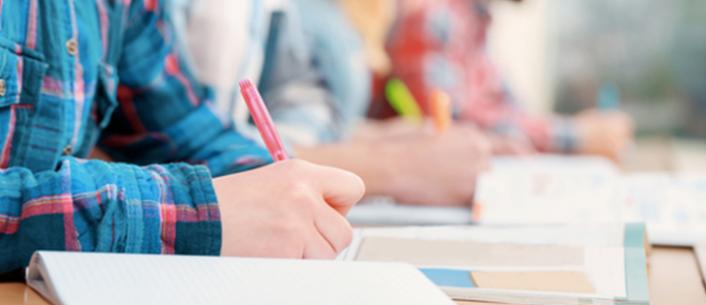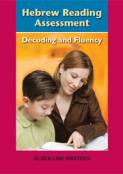- Home
- Play & Learn Home
- Online Enrichment
- Experience Modern Israel
- Israel It's Complicated
- Jewish and Me
- Jewish Holidays Jewish Values
- Jewish Values in Genesis and Jewish Values in Exodus
- Min Ha’aretz
- Our Place in the Universe
- Simply Seder
- The Prophets: Speaking Out for Justice
- Making T'filah Meaningful
- Make, Create, Celebrate
- Yom Haatzmaut Resources
- Hebrew Apps
- About The OLC
- What is the OLC?
- Introduction
- Get Started
- Resources
- OLC Content
- Parent Materials
- See My OLC Classes
- Store
Measuring Student Progress
Written by Behrman House Staff, 16 of March, 2016
Standardized tests have been a hot topic for parents, teachers, and policymakers for years. Is there a better way to measure our students' progress?
The answer is yes! Here are seven skills that standardized tests should be measuring, according to noted psychologist Susan Engel in a recent Boston Globe piece.
1. Reading
The ability to read is essential to student learning. Engel states that, "Every child should be reading on a regular basis [and] turning to books and other written material for pleasure and for information."
Psychologist have been known to use recordings of children's everyday speech to calculate the complexity of their speech and the size of their vocabulary. We can use this method and collect random samples of essays and stories to help analyze their reading progress.
2. Inquiry
Children are curious by nature. But according to Engel, "When children get to school, they ask fewer questions, explore less often and with less intensity, and become less curious." Fortunately, researchers have developed methods to measure children's interest in inquiries.
Recording the number of questions children ask during a given stretch of time can help us "rank" their questions. Are they persisting in asking questions if they don't get the answer the first time? Are they asking others or using other techniques to get their answers?
3. Flexible Thinking and the Use of Evidence
We are already measuring how well college students can think about situations, why not measure it in younger students as well?
Ask students to write essays that draw on areas of expertise so you can assess his or her ability to convey information and substance. Engel suggests prompts asking students to answer from someone else's point of view to gauge their ability to understand the perspectives of others as well.
4. Conversation
Conversations may seem like a hard thing to measure - but they're not! According to Engel, researchers have been analyzing conversations for years.
Methods include analyzing how long conversations last, how many times each person speaks, how many topics are addressed, and more.
"Outside coders could code children's conversations for a number of characteristics: turns taken, depth of topic, amount of information exchanged, points of view articulated, and number of agreements and disagreements within the conversation."
You can also use these techniques to measure your conversations with your students.
5. Collaborations
We all hear the stories of students who just don't fit in. Some of us unfortunately witness this tale daily. We can help students navigate through social issues in school by being good role models for studnets.
When teachers practice kindness with students and other teachers, students are exposed to proper collaboration techniques.
"When parents ask me what to look for when visiting a new school, I always tell them to hang out in the hallways, looking at what is on the walls, listening to what teachers say to students as they pass by, and watching what teachers say to one another," Engel writes, "If there's one thing we know, it's that collaboration and kindness emerge in a given setting only when such values permeate the group."
As important as it is to monitor how our students interact with eachother, it's as important that we are setting good examples for them.
6. Engagement
How can we make sure our students are fully engaged in their learning?
Research says students should be able to focus on a topic for 20 mintues. Encouraging students to talk about a story provides an opportunity to measure their ability to focus.
"The assessment should simply show that an individual child does become deeply immersed in one thing or another periodically," Engel writes. "Similarly, the assessments can show whether a given classroom is providing enough opportunities for immersion."
7. Well-Being
It's important to us to know that our students are doing well, both academically and personally. Measuring their well-being is easy by asking the right questions.
"Questions might probe what they are working on that they care about, how often they like being there, whether they feel known by adults in the shool, and how much of the time they feel interest in at least some of what they are doing."
Each of the seven suggestions above helps us measure student progress and improve our learning environments.
Read the full Boston Globe article here.
Do you have your own suggestions to help measure student progress? Let's talk about it!



